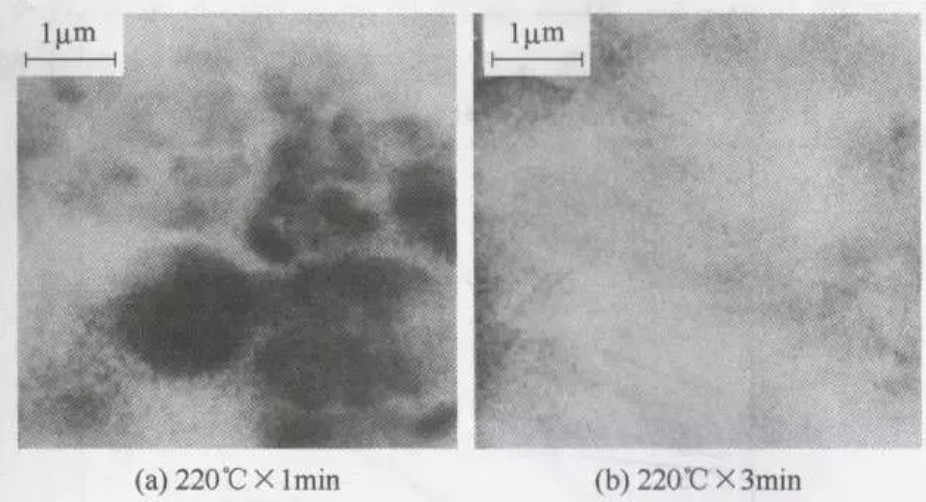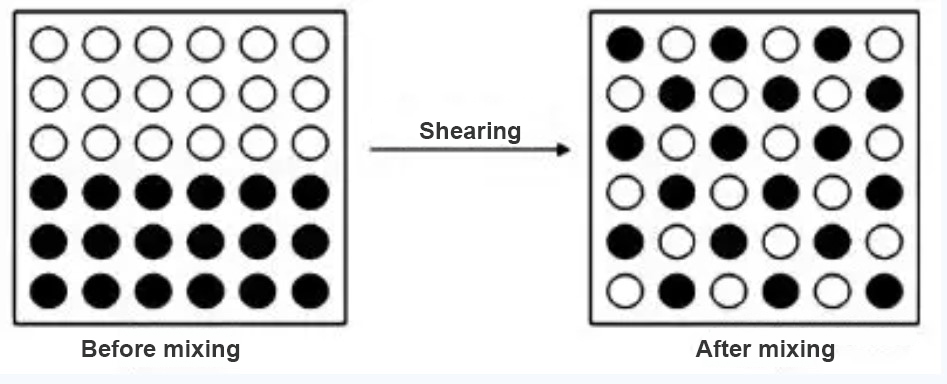6 Points summary of the PVC plasticization rate
1. Influence of plasticization rate on product properties:
The performance of PVC products is closely related to plasticization rate, poor plasticization rate, brittle products, mechanical properties can not meet the requirements; Plasticizing is too high, products will appear yellow lines, mechanical properties are not qualified, plasticizing rate is very important in the process of PVC products. In the past, we have experience that the performance is best when the plasticization rate is 60%~70, and the plasticization rate of 60-65% is the most appropriate for the production of water pipes. Because in this range it can reflect the tensile strength and impact strength of two properties. However, is PVC DG60% ~70%, the performance of the best products? China's PVC products industry senior engineer Mr. Wang Wenzhi in June 2017 Baotou "heat stabilizer environmental protection seminar" issued a document: ISO 1452-2: In 2009, three indexes including longitudinal tensile strength ≥45MPa, elongation at break ≥80% and Tp≥185℃ were used to evaluate plasticization. All these three indexes were ≥, indicating that the greater the plasticization requirement, the better. The peak value of impact strength appears with the increase of Dg, while other properties increase monotonously. Summers et al. believed that the higher the processing temperature and the higher the strength of the THREE-DIMENSIONAL network formed by PVC gelation, the lower the creep and the higher the tear strength and long-term stress strength of the product. As for the phenomenon of peak toughness of the products with the increase of processing temperature, it is not because of the decrease of impact strength caused by the increase of Dg, but because of melt fracture and sliding agent failure caused by the increase of processing temperature.
2. Influence of temperature and shear on plasticization rate:
The plasticization of PVC resin is a process of relative sliding, melting and bonding of particles to form melts under the joint action of mechanical force and heat. Therefore, mechanical forces (shear, compression, etc.) and heat have a direct impact on PVC resin plasticization.
PVC resin can be plasticized by heating alone at a high enough temperature. PVC resin with lead salt heat stabilizer added at 220℃, photos after 1 and 3 minutes:
Effect of heating on PVC resin powder

The state after 3 minutes indicates that the PVC molecular chain is open, with strong fluidity, and is attracted to each other and fused. But plasticizing in this state has no practical significance. One is the limitation of thermal stability, and the other is that the performance after plasticizing can not meet the requirements.
Since heating alone will not suffice, a combination of mechanical shearing and heating will provide a more realistic result. Because of the high viscosity of PVC melt, the resin is difficult to plasticize by heating alone in the usual processing temperature range. According to PVC resin plasticizing behavior mode and microscopic mechanism, if the material is subjected to shear and compression at the same time of heating, it will be conducive to promote the close contact of PVC primary particles, so as to promote its plasticizing.
Under normal processing conditions, the plasticizing rate of PVC resin increases with the increase of processing temperature and shear rate. The increase of processing temperature, the greater the temperature difference, the heat transfer rate will accelerate. Because PVC is a poor conductor of heat, the increase of shear speed will accelerate the friction between the materials to generate heat, and accelerate the contact frequency of materials and equipment, improve the efficiency of heat exchange.
Under the condition of no plasticizer, PVC material can not form a melt at low temperature, a glass state, in the glass state of the material is hard and brittle, in the glass state of the material can not be processed; With the increase of temperature to 160℃, the material is in a high elastic state, but in this area, the material can not flow, can only make the material soft, viscoelastic increase; Can really achieve PVC melt processing, and there is fluidity, the temperature should be between 160-200 ℃, but for any stabilizer, at a temperature higher than 200 ℃, long-term heat, the material and decomposition, so in the control of plasticizing degree, the temperature can only be controlled between 160-200 ℃. In the range of temperature difference of 40℃, PVC temperature set between 170-180℃, plasticizing is better.
3. Influence of resin structure on plasticization
Different processing technology makes PVC resin particles loose degree is different. Loose resins have a faster melting rate than compact resins. For example, loose bulk resin melts faster than tight bulk resin.
The glass transition temperature and melting point of PVC increase with the increase of molecular weight and crystallinity, and the plasticizing of PVC also becomes difficult.
4. Influence of PVC formulation on plasticization
In PVC processing process used lubricants, plasticizers, processing AIDS, impact modifiers, fillers, stabilizers and other PVC plasticizing properties have a greater impact. Of course, different components due to the purpose of their application, the way and degree of influence on PVC plasticizing properties are different. Taking a simple example, it is easy to find in rheological tests that the plasticization time decreases with the increase of CPE components, indicating that CPE can promote plasticization. With the increase of stabilizer, plasticizing time is prolonged, because it contains external lubrication, increase the amount of stabilizer, the amount of external lubricant will naturally increase. All additives, such as ACR and skid agent, will affect plasticizing behavior.
5. Influence of mixing and processing process on plasticizing
Mixing is the process of homogenization of PVC resin and heat stabilizer, modifier, lubricant, filler color and other additives. The main equipment used is high-speed kneader and cooling mixer. The process of mixing is to rely on the mechanical force on the material generated between the friction, shear force to refine the material, heating up, so that some additives melt, coated in PVC resin surface. PVC resin is refined under the action of shear and friction, and the surface is soft and porous under the action of temperature. The additives are adsorbed on the surface and homogenized. The temperature increases further, the surface of the particles melts, and the density of the particles increases.
In this process, PVC resin particles in the strong stirring, material temperature below 50℃, the agglomeration of powder particles and larger particles are rubbed, impact particles become smaller, then the apparent density of the dry mixture changes little and the resin particles become smaller. When the material temperature is above 80℃ to about 120℃, PVC resin particles expand larger (the thermal expansion coefficient is larger near the vitrification temperature), particle size tends to be uniform, the average size of particles and unmixed PVC resin particles similar. At the same time, the apparent density of dry mixture increased rapidly as the particles absorbed the auxiliaries.
The mixing process can be understood as follows:
Microeconomics:

Macroscopic:

The process is not complicated, but the quality of the mixture directly affects the normal production and product quality. Uniformity of mixing, as well as uniformity of shear extrusion and heat transfer during subsequent manufacturing processes, can contribute to the inhomogeneity of plasticizing.
6. The simple methods to increase plasticization during processing:
1、By raising the temperature of the barrel and screw.
2、When the screw speed is normal, improving the feeding speed to improve the plasticization degre.
3、Increase the speed of extruder under the condition of rated speed of extruder and feed.
4、Give the dry powder a good curing period.(12—48h)





